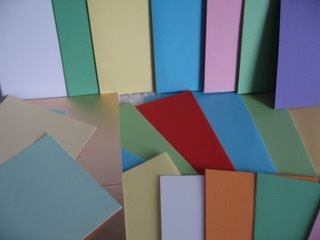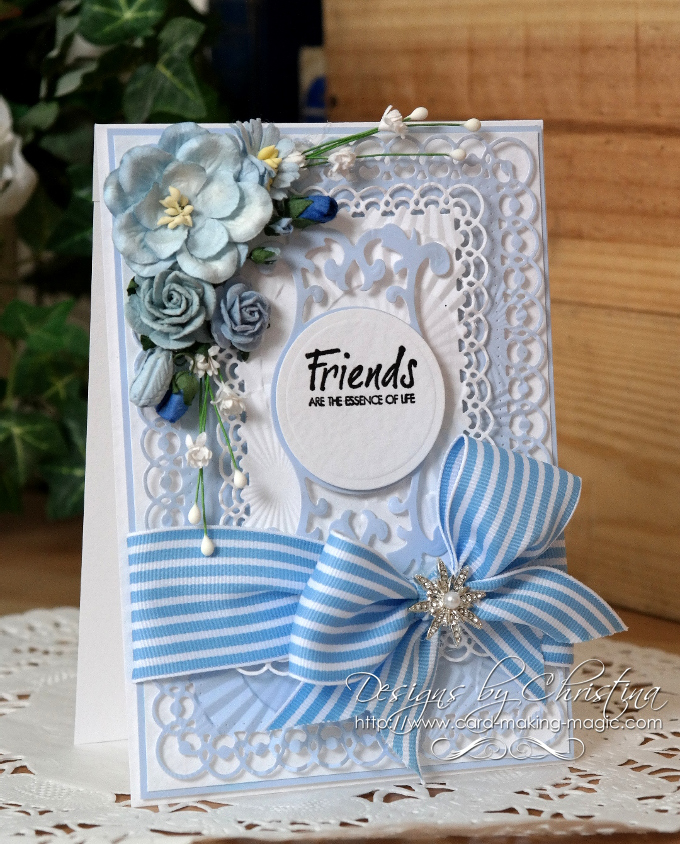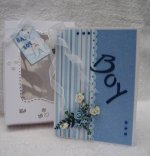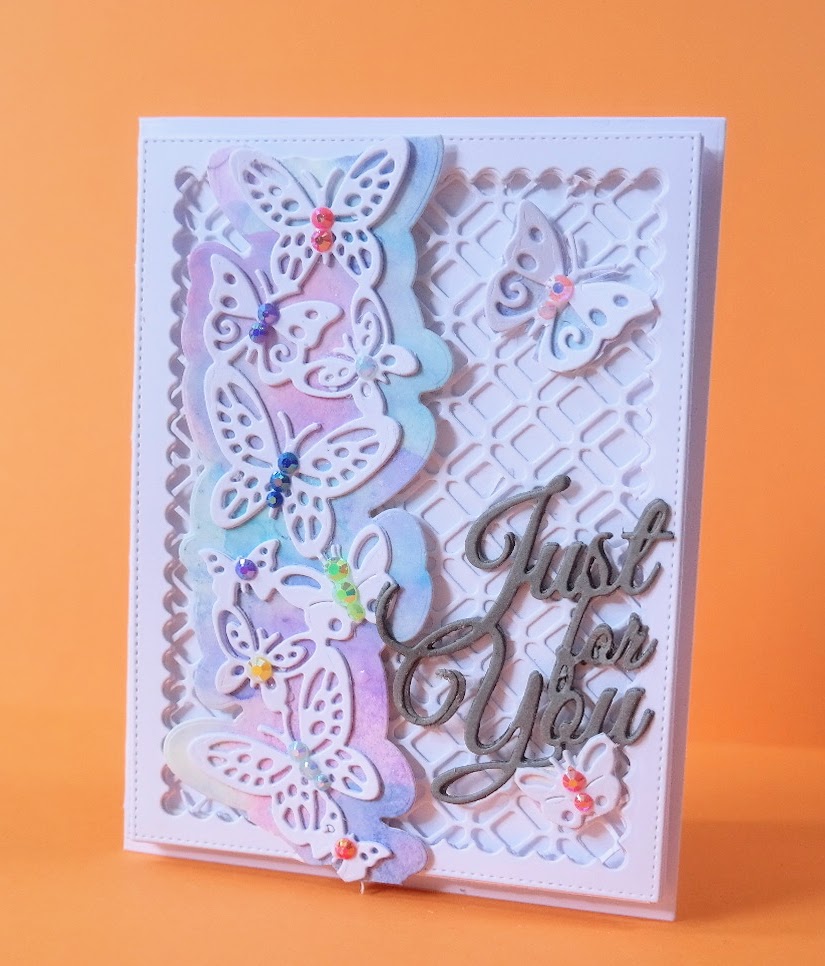Some Magic Effects ...
Created with Card
Card is the basis of your creation and needs to be of a good quality
This is the main base to all your creations and it needs to stand once it has been folded..
If it's too thin it won't stand up by itself, if it is too thick then it will be difficult to fold and it may crack along the spine
When you buy it, it is measured in Weight and the term "GSM" is commonly used for UK weights, which means grams per square metre.
The picture is a very small display of the thousands that are there to buy.
And most of this came from

It is available in many different finishes, such as hammered, linen effect, embossed, coated, pearlized and many more, and each will give you a different result to your cardmaking.
And don't forget the Specialised varieties that can be made into toppers.
This guide will give you some idea of what you get...
UK Paper Weights
Tissue paper 10-35gsm.
Light is about 35-70gsm.
Heavy is about 150-200gsm.
Super heavy is 200+gsm
And a good weight for your creations is between 200-350gsm
------------------------------------------
US Paper Weights
Tissue is tissue!
80gsm copy paper = approx 22lb copy paper
160gsm smooth = approx 60lb cover weight but 65lb is more standard
80lb is more POPULAR. Both come in many colors & textures;
270gsm heavy = approx 100-lb heavy cover weight
300+gsm super heavy = approx 120+lb cover weight
Matting and Layering, is simply layering card or paper together to form a narrow frame around the image to be used as the base of your creation.
You can buy it ready folded as blanks. These are usually sold in packs and come complete with the envelopes.
You can get these blanks already shaped, (handbags, castles, shoes, cats, butterflies etc.) then all you need to do is add the embellishments of your choice.
But you may choose to buy the sheets and cut and fold it your self. This is probably the best option if you have a lot to make, and often works out a lot cheaper.
So lets talk about sizes
When you are new to this hobby it can be a little confusing trying to work out the sizes. This will explain them to you in an easy to understand format.
The un-folded sheet is usually referred to as A4 and it measures approximately 21 x 30 cms. (8 1/4 x 11 3/4 inches)
Most people are familiar with this sizes as it is the size of the copier paper that you will use in your printer.
American Letter Size is slightly smaller (at 8 1/2 x 11 inches) than the A4, but not by much. We just decide to alter it a little and call it A4. (Just to confuse people even more ...)
Using the A4 as your guide ... If you fold it in half it gives an A5 which will then measure 15 x 21 cms (5 3/4 x 8 1/4 inches
If it is cut in half, and each half folded then that is an A6 and will be 10.5 x 15cms ( roughly 4 x 6 inches)
If you fold the A4 into three sections and remove one of the end sections then this is usually called a DL size
I hope these will help you to understand the sizing and to help you further you could buy a metal ruler with both centimetres and inches on it.
A useful piece of equipment to enable you to get a really professional crease is the Scoring Board.
This will give you a really good finish and you will find that the card has a slight overhang on one side.
This is called the "leading edge" and it enables the finished piece to be opened easily, and the largest side should be to the front.
Once you are more confident then have a try at doing some of the different folds.
Take a look at the Basic Folds Tutorial to help you get started.

Recent Articles
-
Memory Book
Oct 15, 22 09:17 AM
Make a memory book, fun to make and even lovelier to give. -
Die cut letters.
Jul 19, 21 10:12 AM
Add that personal touch with die cut letters, add names or sentiment as you please. -
Diaper Fold Card.
Jul 19, 21 09:34 AM
Create this fun Diaper Fold Card...and no need for a pin!
Search





